Megalodon teeth are captivating relics from a time long past. These impressive fossils offer a glimpse into the world of the most dominant marine predator that ever existed.
While they may seem mysterious at first, learning how to identify megalodon teeth is an adventure in itself. Across the United States, especially in areas like the North Carolina coast and Florida rivers, you’ll have a better chance of finding these fossils.
Whether you’re combing a beach or sifting through sediment in a river, discovering a megalodon tooth is a thrill. Let’s dive into tips on where to find them, how to find them, and, of course, how to identify them.
What are megalodon teeth?
Megalodon teeth are amazing remnants from an ancient ocean giant, the megalodon shark. These massive sharks ruled the seas millions of years ago. Over time, when these sharks lost their teeth, they sank to the ocean floor.
Here, layers of sediment covered the teeth, turning them into fossils. As the years rolled on, Earth’s movements pushed some of these fossils onto land.
That’s why today, we can find megalodon teeth in places like Florida, North Carolina, and South Carolina.
These teeth are usually big and triangular with tiny, sharp edges. So, if someone ever finds a large, pointy fossil on the beach, there’s a good chance it’s a piece of history from this amazing creature!
The different types of megalodon teeth
Megalodon sharks had a variety of tooth shapes and sizes, each with its own role. These are the different types of these fascinating fossils.
Anterior
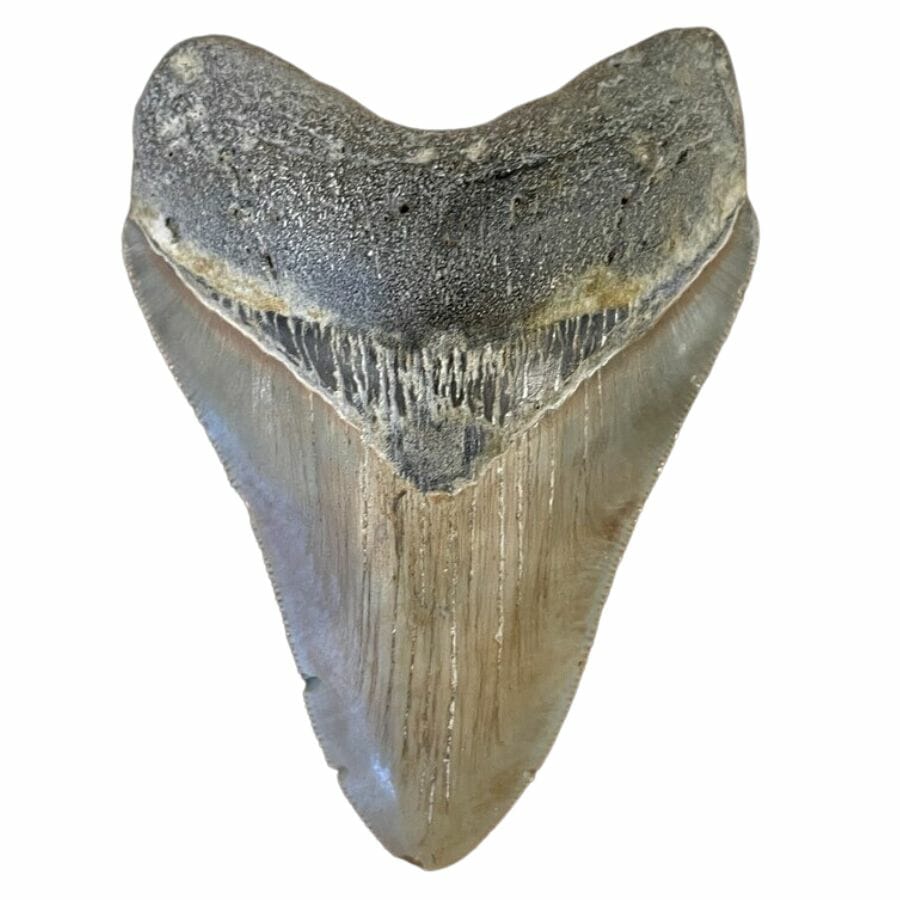
Located front and center, anterior megalodon teeth are big, broad, and triangular. They’re the first you’d see when this giant shark opened its mouth. Compared to other megalodon teeth, they’re symmetrical, meaning both sides mirror each other.
While other teeth in the shark’s mouth might lean to the side or be smaller, anterior teeth stand tall and proud. They play a big role in grabbing and holding onto prey. So, when hunting for megalodon teeth, watch for the anterior ones.
Lateral
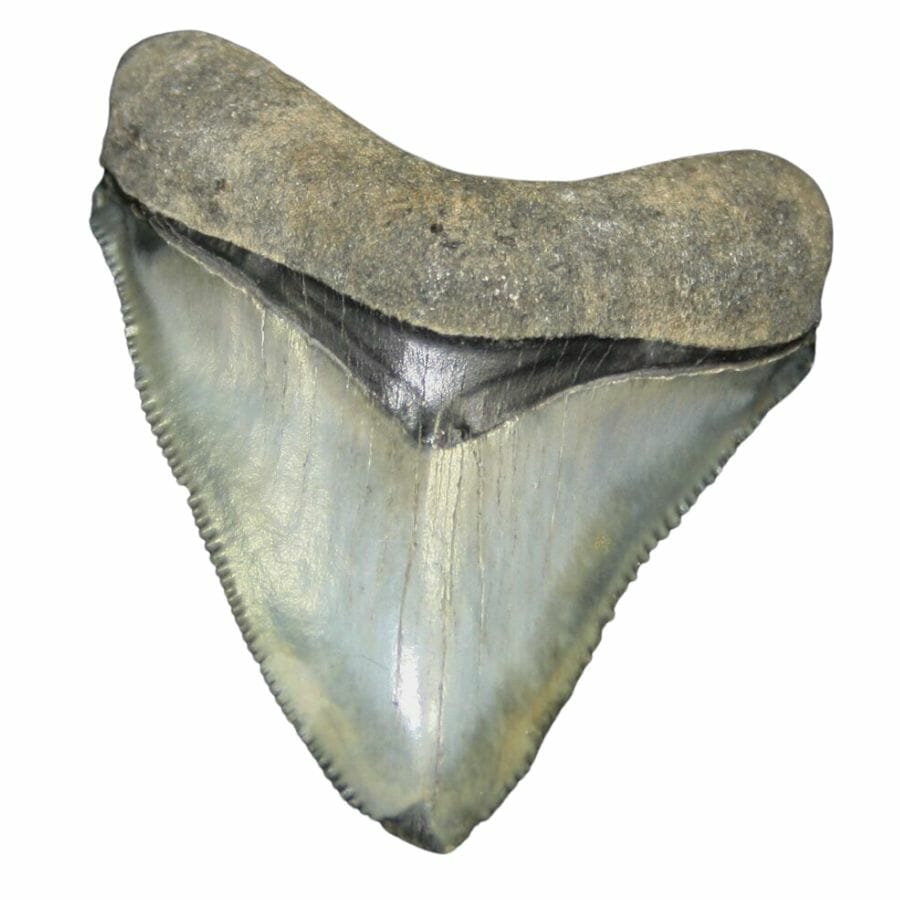
Lateral megalodon teeth are found on the sides, just behind the big front teeth. Unlike the symmetrical anterior teeth, lateral ones have a slant. They lean a bit, making them look like they’re angled to the side.
These teeth are slightly smaller than the front ones but still play a super important role in helping the shark grab and munch on food.
If you find a megalodon tooth that’s angled and serrated, there’s a good chance it’s a lateral tooth.
Posterior
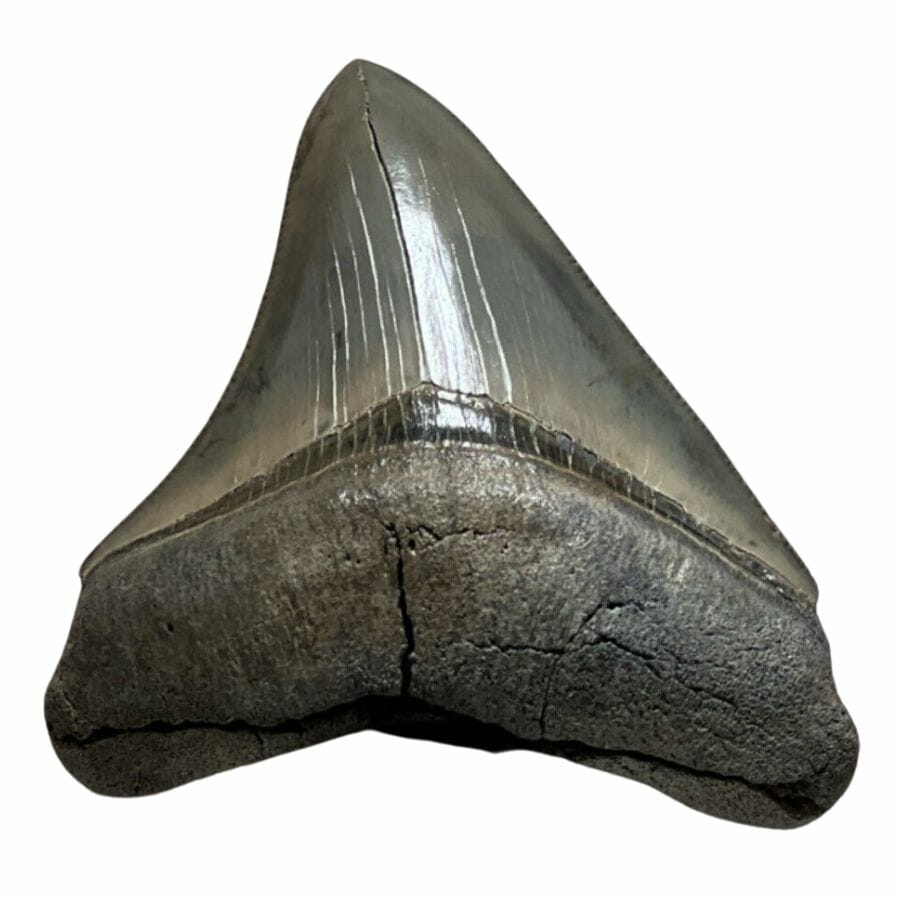
Tucked further back, posterior megalodon teeth are different from the rest. These teeth are smaller than the ones in front and have an interesting shape. They’re asymmetric, which means they aren’t perfectly balanced like some other teeth.
Their design helps the megalodon in those tight spots when catching food. Even though they’re not as big or flashy as the front teeth, they’re super important for the shark’s eating habits.
Where to find megalodon teeth
Across the United States, some spots are like treasure maps, guiding the way to megalodon teeth and other finds. From beaches to riverbeds, there are certain places that are just perfect for finding these fossils.
Venice, Florida
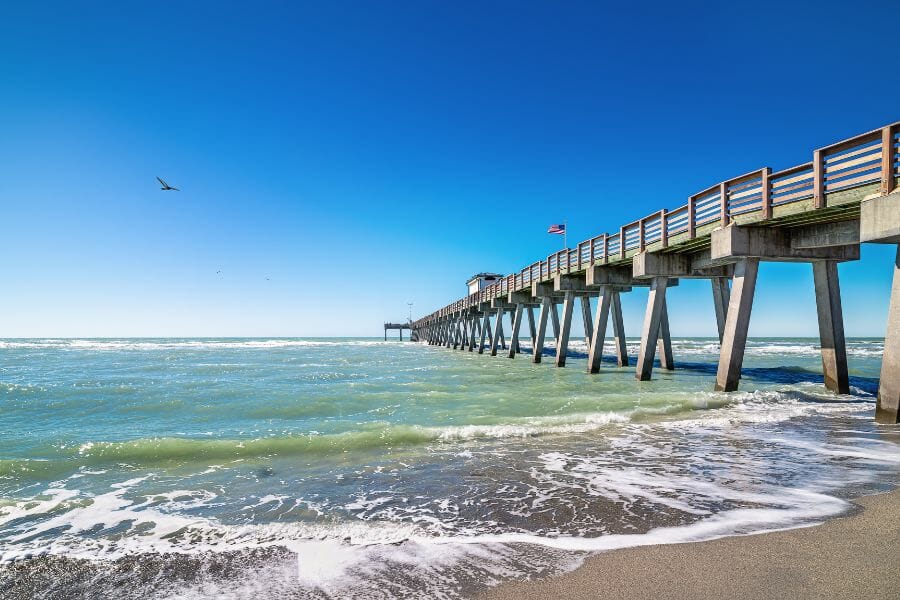
Venice is often called the “Shark Tooth Capital of the World,” and for a good reason! This sunny beach town, with its beautiful shores, is a top spot for megalodon tooth hunting.
As waves roll in, they sometimes bring with them ancient treasures from the deep.
Over the years, countless enthusiasts and casual beachgoers alike have been thrilled to find megalodon teeth here, making Venice a favorite destination for fossil hunters.
The underwater geology and currents around Venice help deposit these fossils on the beaches. So, if you want to find a megalodon tooth, looking around the beaches of Venice is a good start.
Peace River, Florida
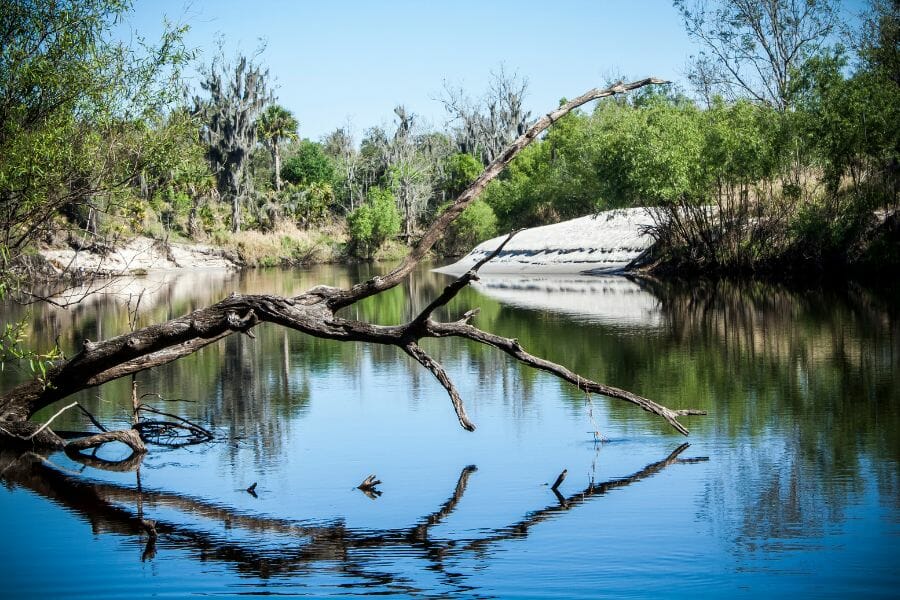
The Peace River is a winding waterway that’s more than just a scenic spot; it’s a treasure trove for fossil enthusiasts! This river is famous for its rich deposits of fossil shark teeth, especially the prized megalodon teeth.
Over time, the river’s currents have exposed layers of the earth that hold these fantastic fossils. People flock to the Peace River, armed with sifters and shovels, hoping to uncover these prehistoric treasures.
The river’s calm and shallow areas make it a fun and accessible place for families and hobbyists to explore.
North Carolina Coast

The North Carolina coast is a stunning stretch of shoreline, boasting beautiful beaches, dunes, and a rich history beneath its sands. This coast is also an adventurer’s dream spot where you can find megalodon teeth!
Thanks to the area’s ancient underwater past, these beaches are sprinkled with fossils from creatures that once roamed the oceans.
Eager searchers often comb the shores, especially after storms, hoping to discover these impressive shark teeth treasures.
The mix of currents and geology in this region makes it a hotspot for these ancient finds. So, if the idea of uncovering a bit of marine history excites you, the North Carolina coast is definitely a place to put on your bucket list.
Cooper River, South Carolina
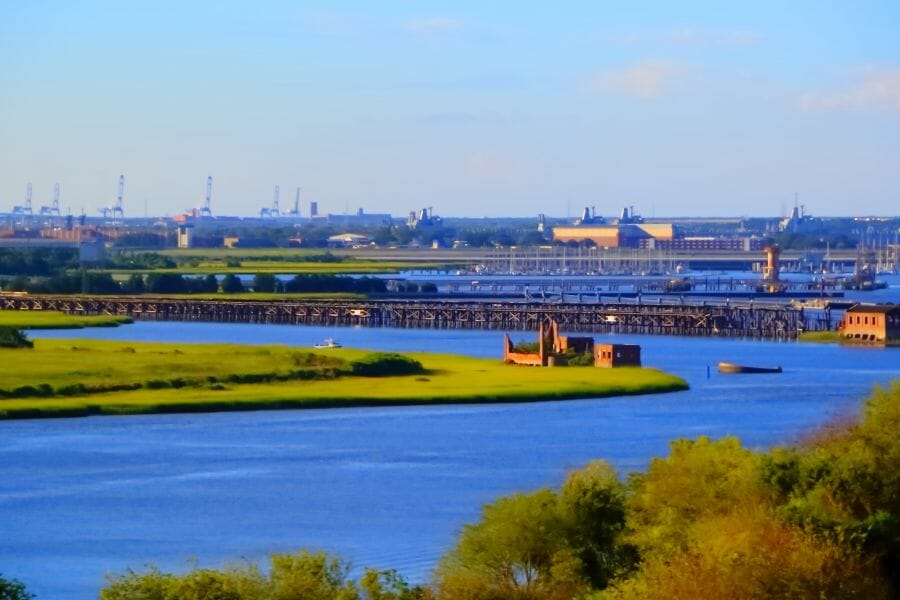
The Cooper River is a flowing gem, winding its way through rich landscapes and historic sites. But what’s truly exciting is what lies beneath its waters. This river is a favorite hotspot for those eager to find ancient megalodon teeth!
The dark waters of the Cooper River have preserved and unveiled many fossils over the years. Divers often plunge into its depths, seeking the prized teeth of the megalodon shark.
Because of its currents, sediments, and ancient pathways, the river is an ideal place to discover megalodon teeth.
St. Mary’s River, Georgia
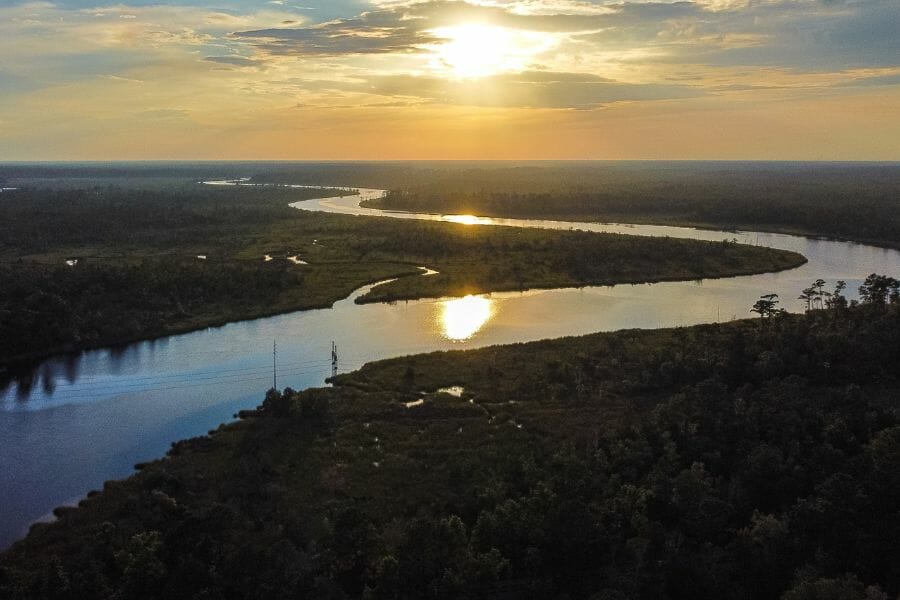
The St. Mary’s River is a captivating waterway, weaving its way through lush landscapes and offering more than just scenic views.
For fossil enthusiasts, this river is a goldmine! It’s one of those places where to find megalodon teeth in real life. The ancient flow of the river and the deposits it carries have made it a treasure trove for fossil hunters.
Eager adventurers often explore its banks and sift through its sands, hoping to uncover the impressive teeth of the ancient megalodon shark.
With a mix of luck and persistence, many have walked away with their own piece of prehistoric ocean history.
How to find megalodon teeth
While these megalodon teeth have been resting for millions of years, there are different things you can do to discover them. From sifting riverbeds to snorkeling in shallow waters, each approach offers its own set of adventures.
Wait for low tide or storms
Knowing the right time to search for megalodon teethcan make a huge difference. Waiting for low tide is a smart move, especially in areas like beaches and riverbanks.
During low tide, the water pulls back and exposes areas that are usually submerged, revealing hidden treasures.
Similarly, after a storm, the powerful waves and currents can shift sands and unearth ancient fossils, including megalodon teeth. Storms can reveal fresh layers of sediment, giving fossil hunters new ground to explore.
So, if you’re keen on finding these ancient shark teeth, keeping an eye on the tides and weather can lead to exciting discoveries.
Look for dark-colored triangles
When thinking of how to find megalodon teeth, a helpful tip is to scan areas for dark-colored triangles. These teeth are often black, brown, or dark gray.
This coloration is due to the minerals they’ve soaked up over time, turning them into those distinctive shades.
Keeping an eye out for dark, triangular shapes is a smart strategy. These teeth stand out against the lighter sands and pebbles.
Spotting a black triangle could very well mean you’ve found a piece of ancient history.
Remember, while searching, stay patient and enjoy the thrill of the hunt, because finding a megalodon tooth is like holding a piece of the Earth’s incredible past!
Use a sifter in creeks and rivers
One of the best ways to find megalodon teeth is by using a sifter in creeks and rivers.
A sifter is like a special net that helps you separate the big finds from the smaller bits. Here’s how it works: you scoop up some sediment from the riverbed, shake it in the sifter, and the water washes away the sand and gravel.
What’s left might just be a megalodon tooth! Places like the Peace River in Florida are super popular for this method. Many enthusiasts have walked away with amazing finds just by using a simple sifter.
Snorkel in shallower areas
Snorkeling is not just for admiring colorful fish or coral reefs; it’s also a fantastic way to hunt for megalodon teeth! In shallow water areas with clear visibility, taking a snorkeling adventure can lead to exciting finds.
The trick is to glide over the riverbed or sea floor, keeping your eyes peeled for dark, triangular shapes. Megalodon teeth often rest just beneath a thin layer of sand or sediment.
With a gentle wave of your hand, you can brush away the top layer and reveal hidden treasures.
Places with calm waters and minimal current are ideal for this method. So, the next time you’re snorkeling, remember: you’re floating above a world of ancient wonders, and a piece of prehistoric history might be just under your fins!
How to identify megalodon teeth once you find it
Megalodon have certain features that set them apart from other shark teeth. Recognizing these characteristics ensures that the treasure in hand is truly a piece of prehistoric ocean history.
What megalodon teeth look like on the outside
Observing the outside of megalodon teeth can give many clues about its history and characteristics. These are the unique aspects of their external appearance.
Size and shape
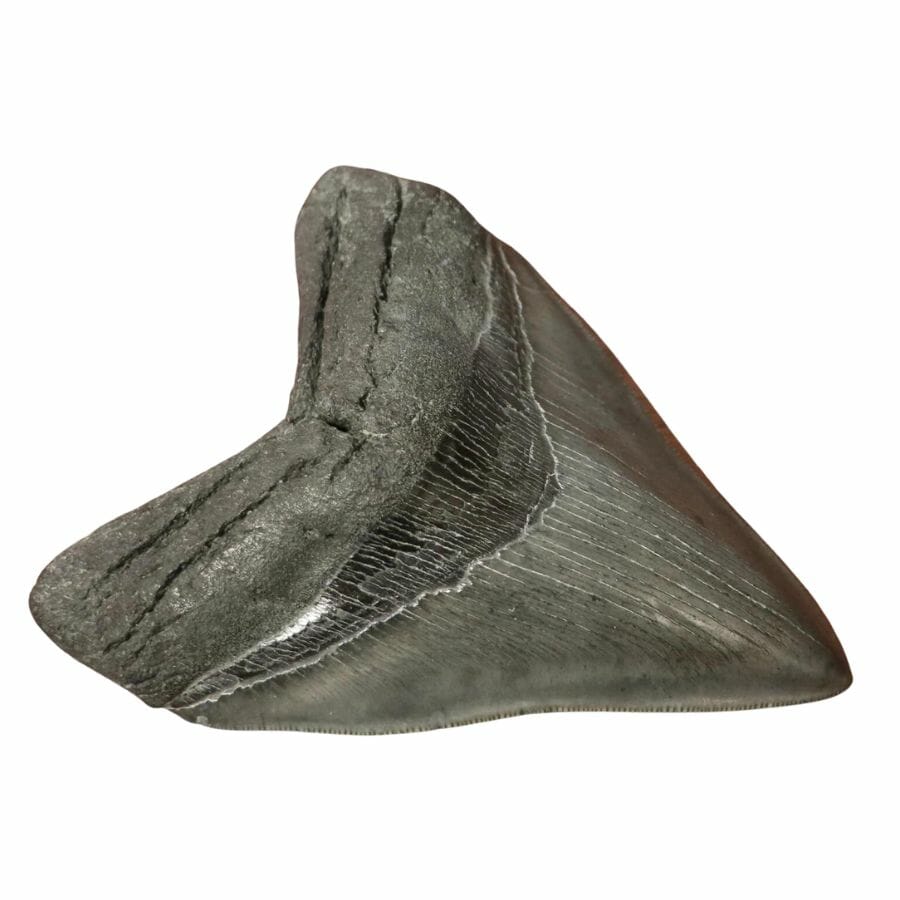
Among all shark teeth, megalodon teeth are some of the biggest you can find! Most commonly, megalodon teeth range from 3 to 5 inches in slant height, which is already impressive.
Shape-wise, these teeth are usually triangular and can still be a bit sharp.
Another interesting feature to note is their slight curvature. While all megalodon teeth are not identical, their curve can vary based on where they were located in the shark’s mouth.
Teeth from the side, known as lateral teeth, tend to have a bit more curve to them compared to the ones in the front or center, also known as anterior teeth.
But here’s the wow factor: there are some rare ones that can even stretch beyond 6 inches! Just think about holding something that big from an ancient ocean creature.
Bourlette
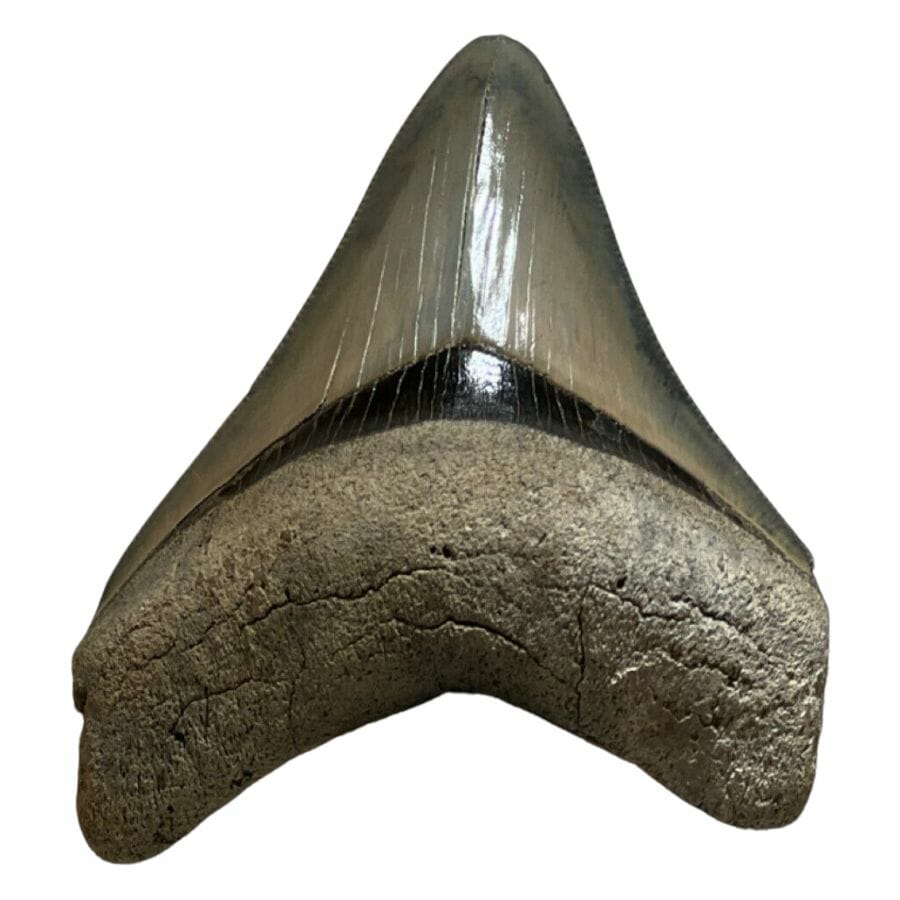
When we talk about what megalodon teeth look like on the outside, the bourlette is a standout feature to mention. This part of the tooth is chevron-shaped and is often darker in color than the rest of the tooth.
Positioned right where the crown meets the root, the bourlette adds to the tooth’s distinctive appearance. It’s not just a flat patch; it’s thickened and can sometimes have a textured feel to it.
This feature can vary from one tooth to another in its prominence.
When you see this characteristic shape and texture, you know you’re looking at a detail that makes megalodon teeth even more fascinating and distinct from other ancient shark teeth.
Serrations
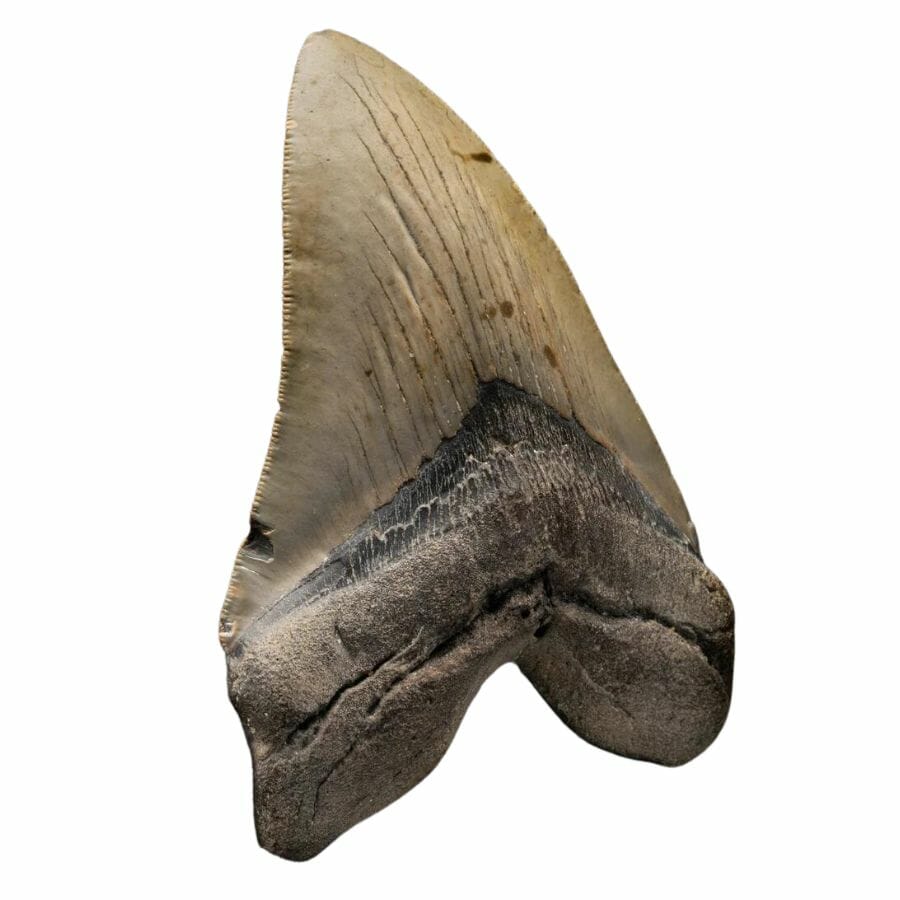
Megalodon teeth have an awesome feature that’s a favorite among many fossil enthusiasts: their serrations. Just like the edge of a trusty steak knife, these teeth boast finely serrated edges.
These tiny, jagged points are not just for show; they played a crucial role in helping the megalodon chomp through its prey in the ancient oceans.
It’s quite fascinating how often these serrations remain well-preserved over millions of years, standing as a testament to nature’s design. However, keep in mind that not every tooth will have perfect serrations.
Some teeth, especially if they’re worn down or have faced the ravages of time, might show less visible or worn-off serrations. Still, spotting these serrated edges is a thrilling part of exploring megalodon teeth.
What megalodon teeth look like on the inside
Megalodon teeth are not just impressive on the outside; there’s a whole story hidden inside them too. The inner structures can tell us a lot about the tooth’s growth and the shark’s life.
Dentine
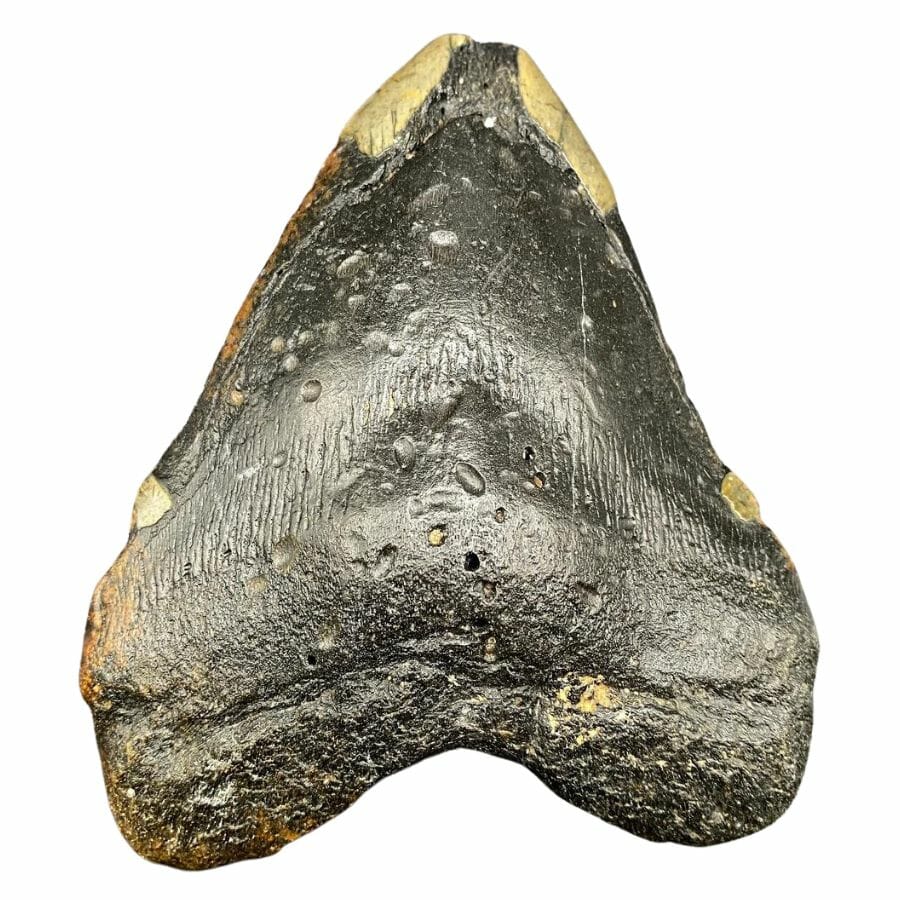
Dentine plays a vital role in how megalodon teeth are formed. It’s the main body of the tooth, positioned right beneath the enameloid. In the fascinating world of sharks, there are two distinct types of dentine: orthodentine and osteodentine.
Orthodentine has a smoother texture and is predominantly located in the crown of the tooth. It’s what gives the crown its defining shape and strength.
On the other hand, osteodentine, which has a structure and appearance more like bone, is generally found in the root and the base of the crown.
These two types of dentine work together, giving the megalodon tooth its durability and characteristic look that fossil hunters and enthusiasts admire today.
Pulp cavity
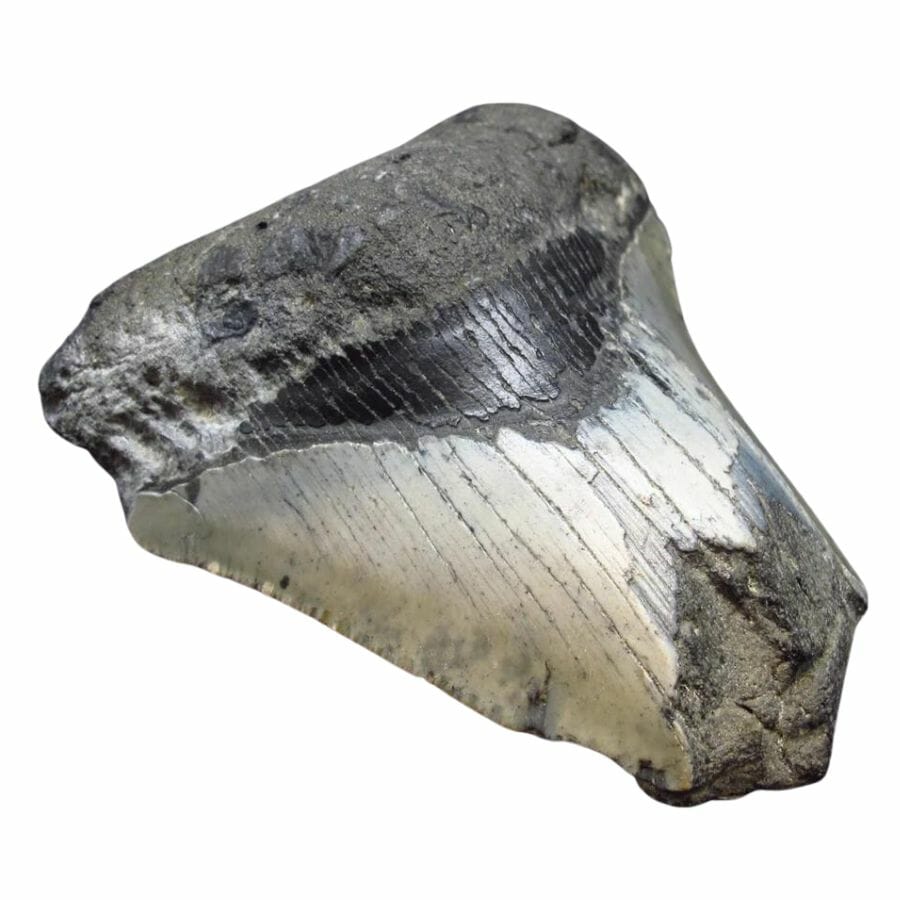
The pulp cavity is a fascinating part of megalodon teeth. Located right at the center of the tooth, this cavity once housed essential components, like blood vessels and nerves, when the shark was alive.
Over time, as the tooth became fossilized, the organic materials within the cavity mineralized. Despite millions of years passing, evidence of the pulp cavity can still be observed in well-preserved megalodon tooth specimens.
This feature gives us a glimpse into the living structures that supported the tooth, offering insights into the shark’s biology and the tooth’s growth.
Sharpey’s fibers
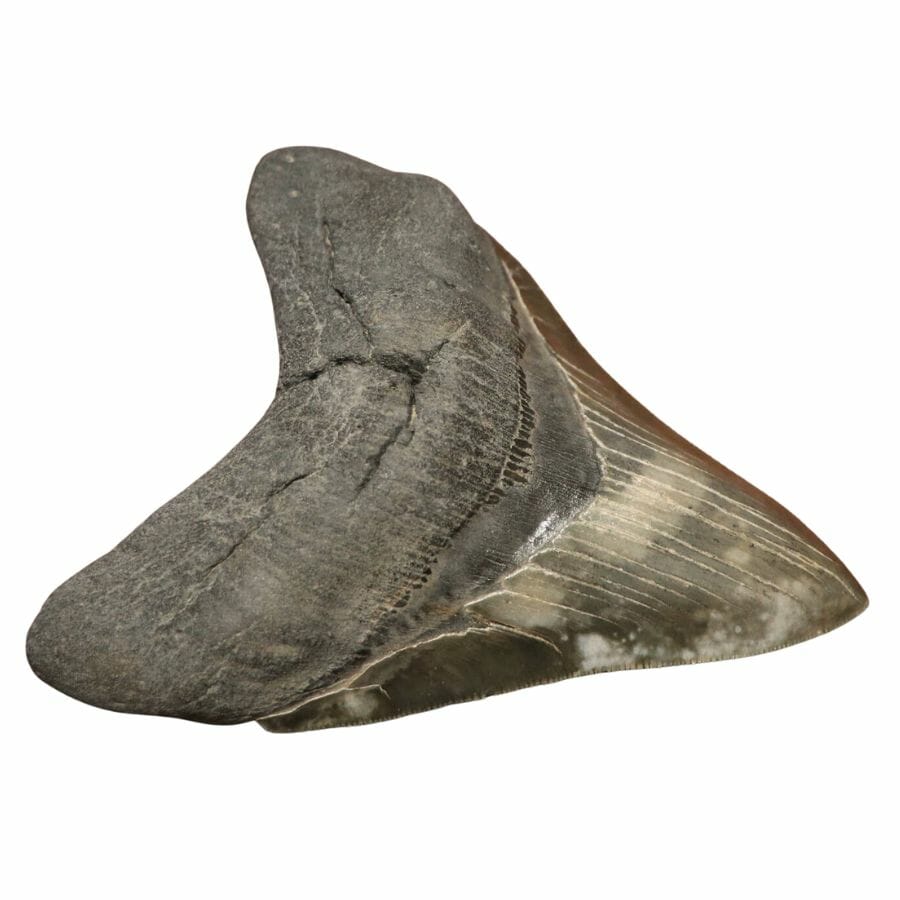
Sharpey’s fibers play a crucial role in understanding what a megalodon tooth looks like on the inside. These fibers acted like anchors, holding the tooth firmly in the shark’s jaw.
The tooth’s root contains special imprints and channels that served as pathways for these fibers. Over time, as the shark’s tooth became fossilized, the areas where the Sharpey’s fibers were located left behind markings.
These markings can sometimes appear as small holes or channels when you examine the fossilized root.
If you ever come across a megalodon tooth and notice these imprints, you’re seeing evidence of the intricate connection between the tooth and the jaw from millions of years ago!


